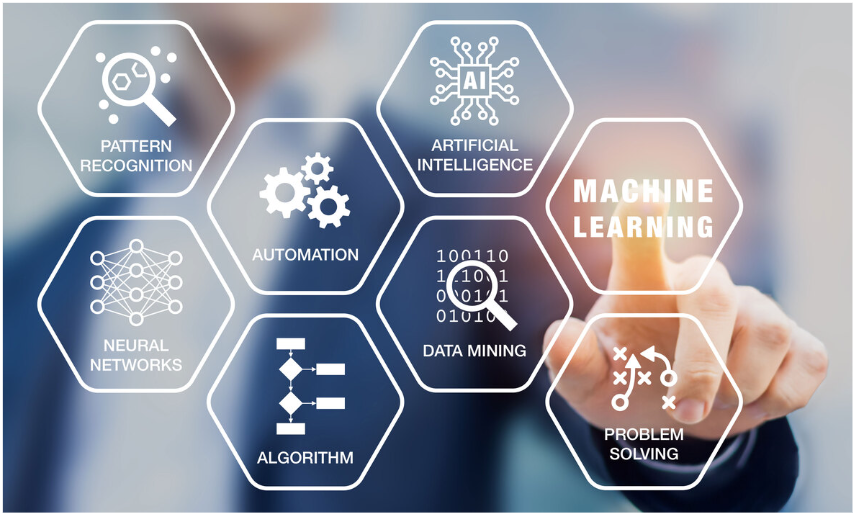- About
- Network
- Community
- Initiatives
- News
- Events
- Blog
- Publications

A Community of Innovation: National Research and Education Networks in North America
Categories AI/Machine Learning RENS & NRENS Pacific Wave Security Equity & Access Technology & Innovation
CENIC’s membership includes the university research community in California which uses the CENIC network to engage with diverse partners regionally, nationally, and internationally. Moreover, through a globally interconnected community of research and education networks, California researchers and students can access global-scale research instruments and vast amounts of data, via one of the most advanced fiber-optic networks in the world designed to support research.

The topics of artificial intelligence and machine learning (AI/ML) loomed large throughout the March conference. In addition to CENIC and its members’ perspectives on AI/ML, a Monday morning panel discussion with leaders of five major North American research and education networks (RENs) provided the opportunity for them to address how their organizations and user communities approached these topics as major players in the global collaborative REN ecosystem.
Among these leaders were Kathryn Anthonisen, President and CEO of CANARIE, the federal partner in Canada’s National Research and Education Network; Moisés Torres Martínez, General Director of Mexico’s Corporación Universitaria para el Desarrollo de Internet (CUDI); Inder Monga, Executive Director of the US Department of Energy’s Energy Sciences Network (ESnet); Howard Pfeffer, President and CEO of Internet2; and Sylvie Cosgrove of Stanford University and Chair of the CENIC Board of Directors.
An Overview of Four North American Research Networks
In 2022, ESnet completed the latest update of its national network, referred to as ESnet6, built to interconnect the Department of Energy’s 17 national laboratories, 28 national user facilities, and other assets to one another and, through multiple peering connections, to colleagues and other assets worldwide.
A science-focused network, it is optimized to carry traffic for big-data-driven topics like particle physics and climate change and to that end, offers 46 Terabits per second of bandwidth. To stay ahead of their community of high-performance users, ESnet also performs systematic requirements reviews for the six DOE Office of Science program areas to prepare for future scientific networking needs.
Created by the Canadian federal government and funded in 5-year tranches, with a foundational mandate to increase the well-being of Canadians through technology deployment, CANARIE represents Canada’s NREN internationally, connecting to provincial and territorial networks throughout Canada to each other and to the rest of the world, with what the website refers to as the “last spike” of inclusion driven in 2020 when the territory of Nunavut was connected.
Established in 1993, CANARIE’s initial focus was developing the national backbone and connecting to the various large and small regional networks, with the aim of ensuring that no region was left at a disadvantage. Given the broad mandate of the organization, its focus has expanded over time to include adoption of digital tools for Canadians across the country, including business, health, and learning applications, funding the development of software tools so that researchers could better leverage the network, and most recently funding cybersecurity services for over 220 organizations connected to the National Research and Education Network.
The fee-based CUDI began in 1999 in Mexico with a mandate from the Mexican federal government to develop a national research and education network. As the southernmost of the North American NRENs, it serves as a bridge between continents and connects to Central and South American networks through a peering connection to redCLARA as well as peering with its northern neighbors in San Diego and El Paso, TX. While there are 50 member institutions in CUDI, the organization nonetheless works with over a hundred universities throughout Mexico. With the Consejo Nacional de Humanidades, Ciencias y Tecnologías (CONAHCYT), the Mexican equivalent of the US National Science Foundation, they also work to facilitate collaboration in network-enabled research and education.
One of CUDI’s current concerns is that of cybersecurity, given that South American networks are often the targets of hostile governments and other organizations seeking to foment political, social, and economic disorder. To this end, it has developed a community of cybersecurity experts to address the topic.
As a leader in the national research and education space, Internet2 serves 335 higher-education members and many thousands of miles of fiber connecting to 58 government agencies, 46 regional and state education networks, and through them supports more than 80,000 community anchor institutions, over 1,000 InCommon participants, 59 leading corporations working with its community, and 70 national research and education network operators that represent more than 100 countries. With its massive national footprint, Internet2 plays a crucial role in providing transit to other NRENs among each other and beyond as well as facilitating partnerships and collaborations.
With such an extensive footprint, efficiency and sustainability are important parts of their ongoing strategy, and recent upgrades of infrastructure (both equipment and fiber) and services have resulted in a two-thirds reduction in power consumption. Resource sharing is also an important part of their pursuit of efficiency and sustainability, with one example being engaging in spectrum sharing with CENIC and the Western Regional Network (WRN).

Artificial Intelligence and Machine Learning Transforming R&E Networking
When asked to consider the ways in which AI/ML intersect with the world of R&E networking, panelists considered everything from research to policy to day-to-day use. Both ESnet Executive Director Inder Monga and Internet2 President and CEO Howard Pfeffer noted that AI is not possible without networks to provide access to trustworthy, well-crafted training data and large language models (LLMs) to create, research, and improve on it. Pfeffer also raised questions about networks’ own use of AI in engineering and software development as compared to whether AI might be offered as a service or platform.
In addition to the cybersecurity concerns previously mentioned, CUDI General Director Torres Martínez told audience members that CUDI has also facilitated an AI working group examining its impact in the higher education learning process. Specialists from eight Mexican supercomputing facilities are also working on the uses of AI in big data processing.
CANARIE President and CEO Anthonisen stated that the Canadian government has deployed a national AI strategy, and that CANARIE will explore potential initiatives to support this strategy. She then added to Torres Martínez’s concerns about international security, as part of CANARIE’s role in advancing higher education cybersecurity will involve the use of AI tools in creating a coordinated defense mechanism against foreign threat actors.
CENIC Board member Cosgrove noted that while it began in the R&E community, AI has entered everyday life and has begun enabling critical services such as healthcare, discussed in a recent Stanford University panel on the topic of AI’s future in medicine. As a result of this, Cosgrove emphasized the importance of getting AI and its benefits “into people’s houses.”

What Lies Ahead: Networking-Enabled AI/ML in the Near Future
Security and climate change were top of mind for all panelists alongside topics like the coordination and balance of power grids and the utility of connecting remote areas via low-Earth orbit (LEO) satellites, as has been done in the far northern province of Nunavut, Canada. Trans-oceanic cable connections are also a valuable part of getting remote areas online that may be located near cable landing stations. Further, many such remote areas are sources of vital environmental and climate-related data and will be hit hard by coming climate changes.
Routing security and integrity was also emphasized as a vital part of global connectivity, as well as security of the physical infrastructure.
Related blog posts
CENIC and San Diego Supercomputer Center Create Sustainable Agriculture for California’s Future
CENIC’s networking and services, including CENIC AIR, can be a vital part of preparing new generations of farmers that will apply the latest technology to agriculture by turning the farm into an educational setting and improving the efficiency of farming as a career.
CENIC Members Enable Data-Driven Agriculture: Optimizing Harvests in a Changing Environment
The use of technology in agriculture to increase yield and decrease resources is the focus of an innovative project fueled by CENIC and its collaborative partners: a novel model of precision agriculture in the vineyards.


